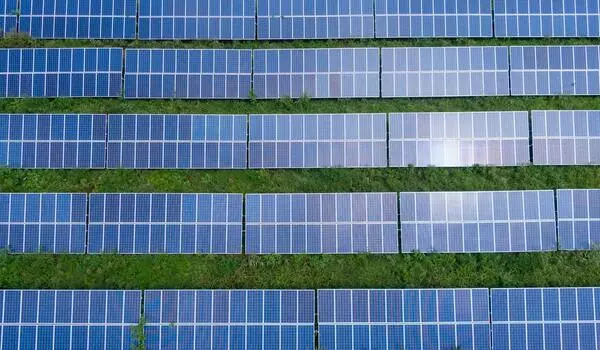The US Army debuted a new solar plant above Big Muddy Lake at Fort Bragg in North Carolina over the weekend, putting floating solar in the spotlight. It is the first floating solar array deployed by the Department of Defense, and it is part of a growing stream of support for “floatovoltaics” in the United States.
The army claims its goal is to increase renewable energy, reduce greenhouse gas emissions, and provide backup energy to a neighboring training center during power outages. The panels will be able to generate approximately one megawatt of electricity, which is enough to power approximately 190 homes.
The installation, the largest in the US Southeast, is a big win for floatovoltaics, which have yet to make a big splash in the US. They only make up 2 percent of solar installations annually in the country, according to Duke Energy, which collaborated with Fort Bragg and the renewable energy company Ameresco on the project.
Floating solar has traditionally been slightly more expensive than its land-based competitors. The panels are effectively mounted on a raft that is attached to the bottom of the body of water. However, floatovoltaics have distinct advantages. Hotter temperatures make it more difficult for solar panels to produce the same amount of power from the same quantity of sunlight. Fortunately, sitting on water has a cooling effect, allowing the panels to generate more electricity than panels on land. This increases the efficiency of floating solar and compensates for greater installation costs over time.
The installation, the largest in the US Southeast, is a big win for floatovoltaics, which have yet to make a big splash in the US. They only make up 2 percent of solar installations annually in the country.
And, while solar has already become the world’s cheapest electricity source, it is extremely land-intensive. A solar farm may require 20 times the land of a fossil fuel power plant to produce one gigatonne of electricity. Solar projects in the United States have already encountered opposition from farmers who wish to use the same land, as well as conservationists concerned about the impact on desert ecosystems.
Floatovoltaics, on the other hand, may be able to avoid some of these stresses. They are more widespread in the United States on man-made bodies of water such as reservoirs or canals. These are easier to build on and have a lower impact on sensitive ecosystems than facilities erected on natural ecosystems such as deserts. According to a recent article in the journal Nature, covering just 10% of the world’s hydropower reservoirs with floatovoltaics may provide as much electricity as all of the world’s active fossil fuel power plants combined.
The added benefit is that the panels reduce evaporation — an especially important feature in dry areas where water levels are falling fast. Drought-stricken California is even piloting a project to line irrigation canals with solar panels.

All of this has the potential to strengthen solar’s position in the United States. Solar still accounts for less than 3% of the US electricity mix. Wind power generates around three times as much electricity in the United States. However, floating solar has already built a name for itself outside of the United States, particularly in regions where land is scarce, such as Japan.
To satisfy US and global climate targets, all renewables will need to scale up dramatically. The Biden administration has set the aim of achieving a 100 percent clean energy power grid by 2035 and net zero greenhouse gas emissions by 2050. That’s what’s needed globally to achieve targets agreed upon by much of the world under the Paris climate accord.
The US Department of Defense is one of the biggest polluters on the planet, with the US military releasing more greenhouse gas emissions annually than some 140 nations. So the new floating solar plant at Fort Bragg is sorely needed as a source of clean energy. In February, the US Army released its own “climate strategy” for reaching net zero emissions by the middle of the century.
Combating climate change is also in the army’s best interests. “Climate impacts will impair Army activities for the foreseeable future,” according to the army’s climate strategy. This includes the possibility of power disruptions. Fort Bragg’s new floatovoltaic array also includes a 2-megawatt battery in case of an emergency, such as if a hurricane knocks out power to the area. By 2040, the army expects all of its facilities to have “adequate renewable energy generation and battery storage capacity to self-sustain its key missions.”
















